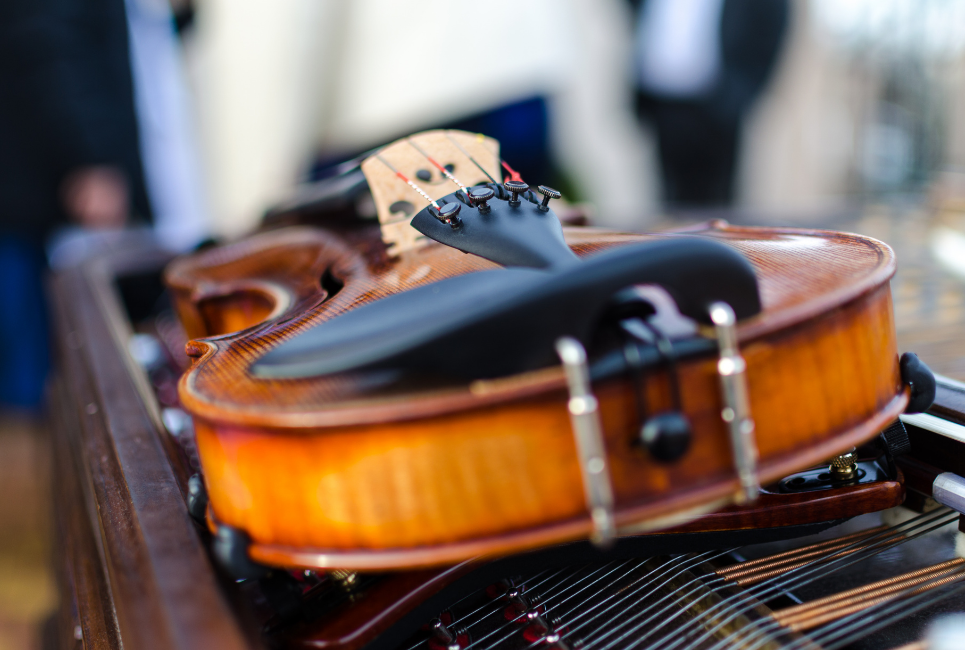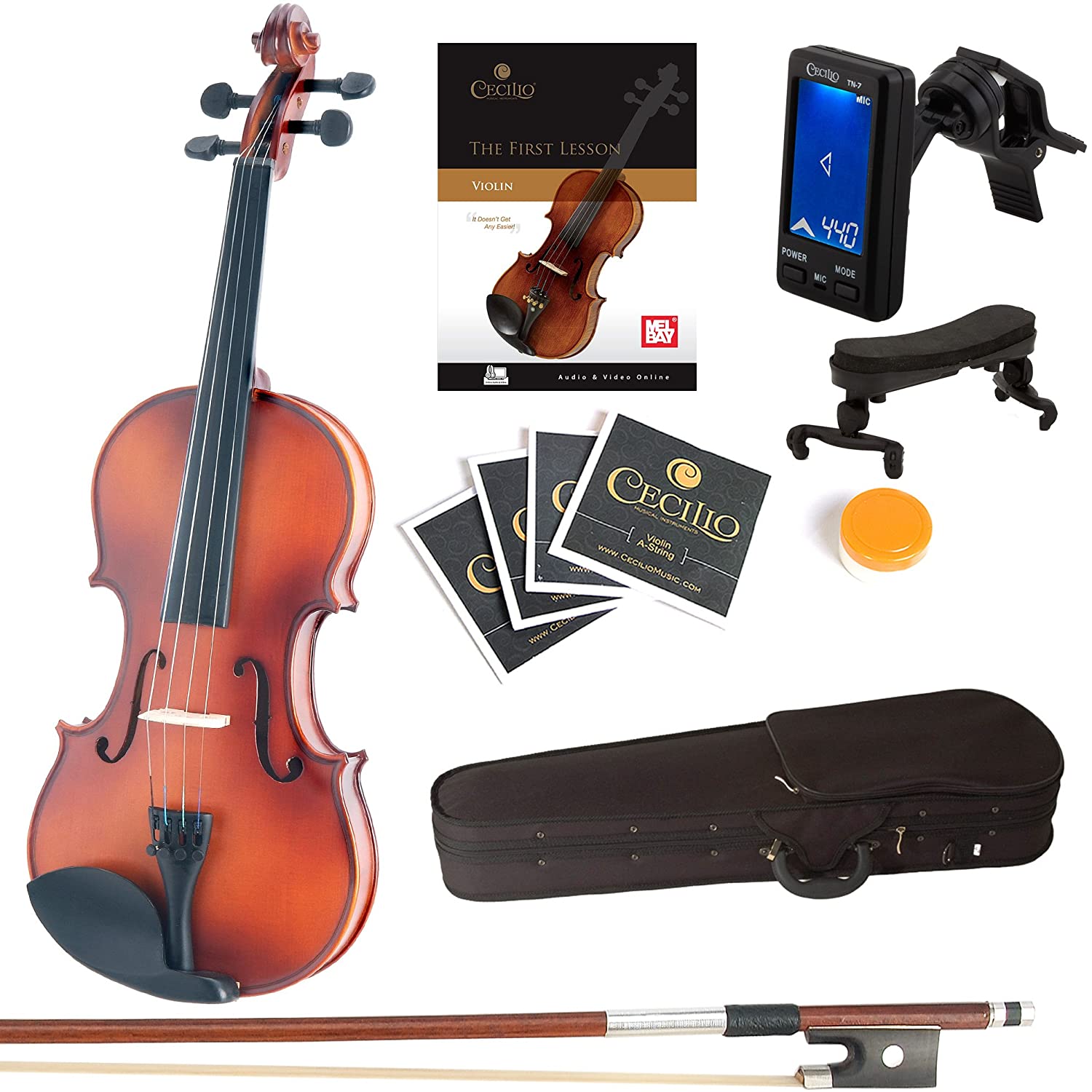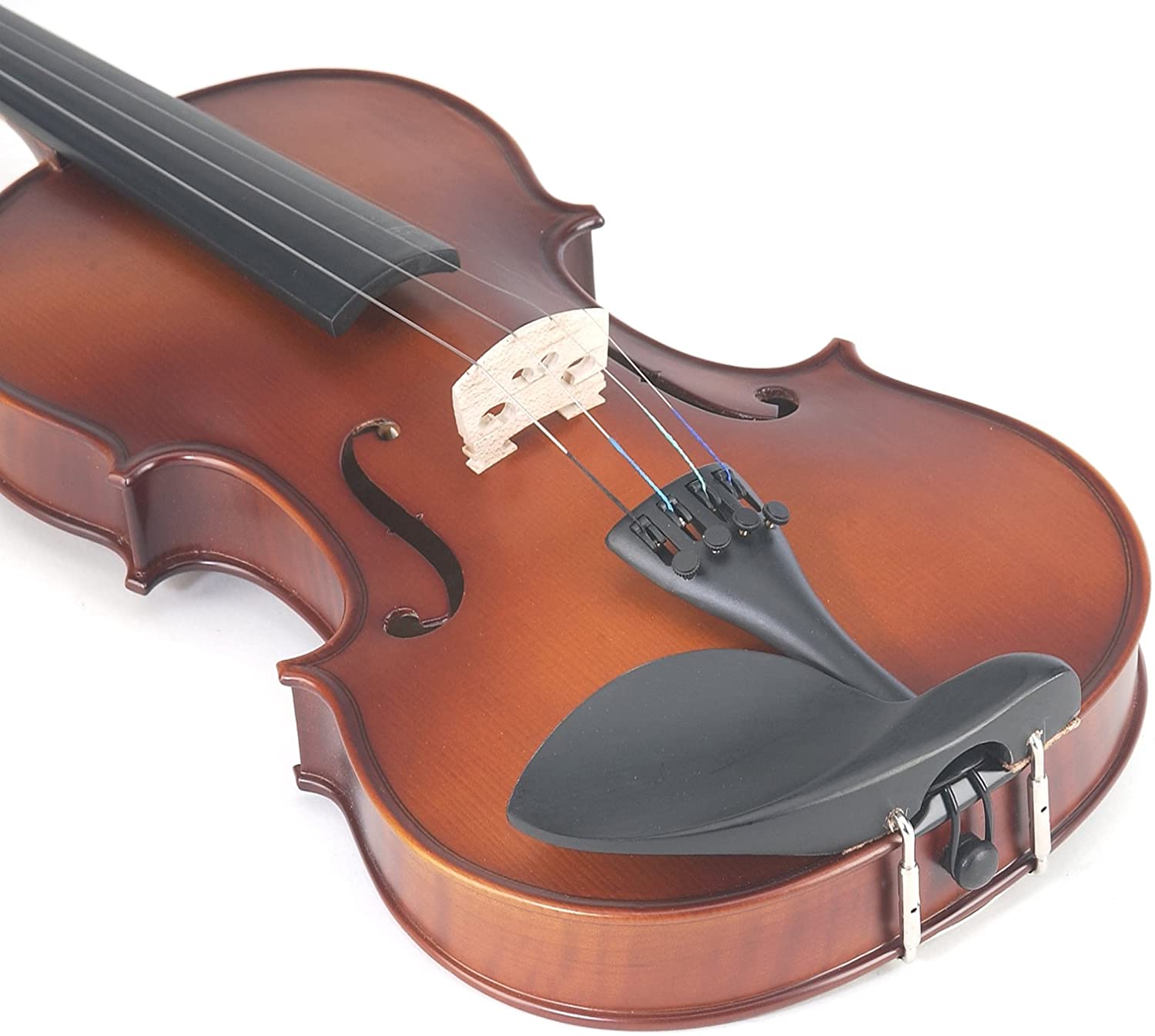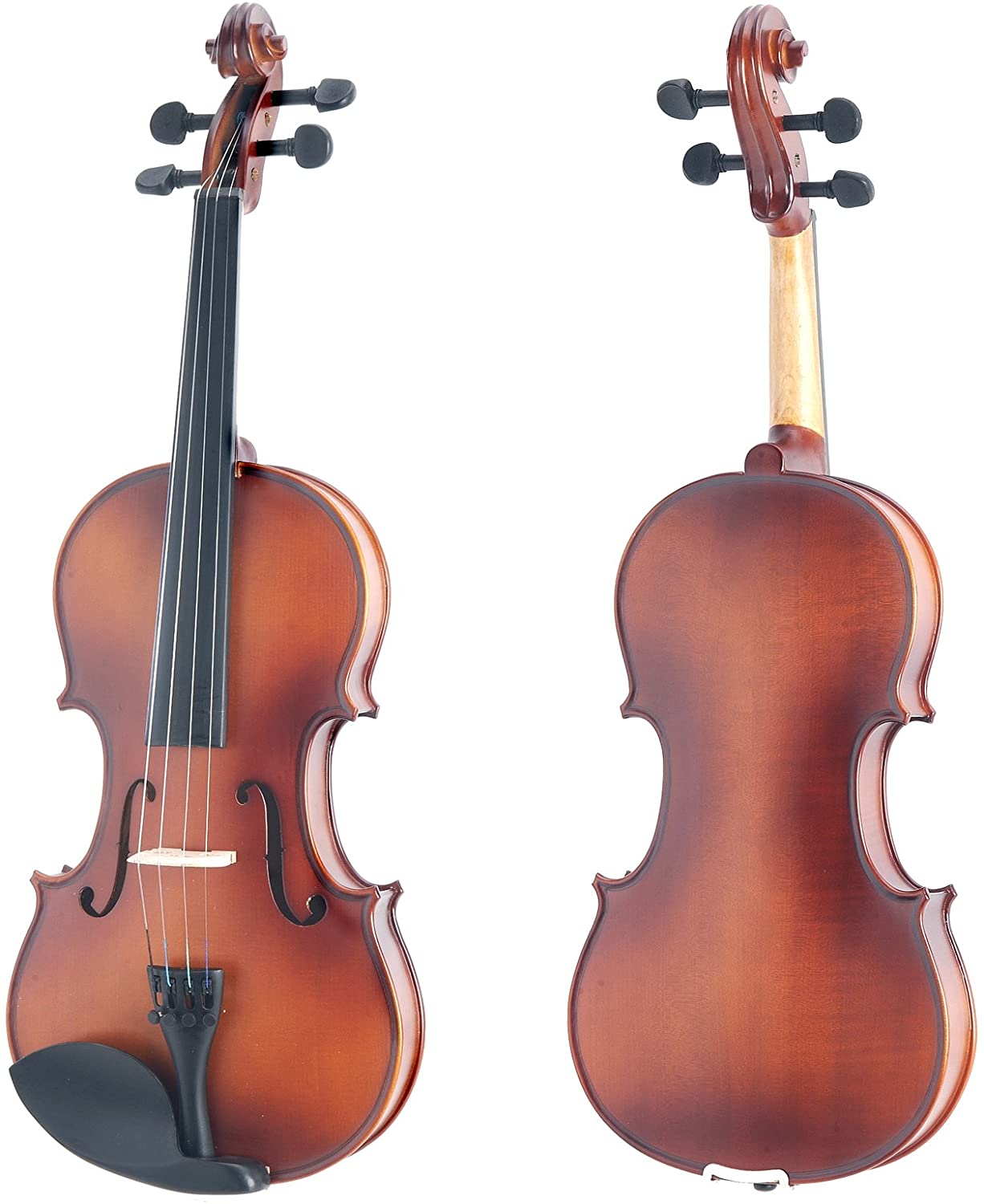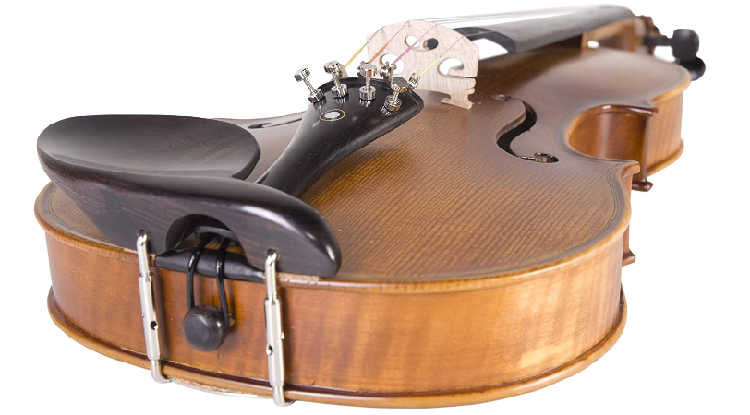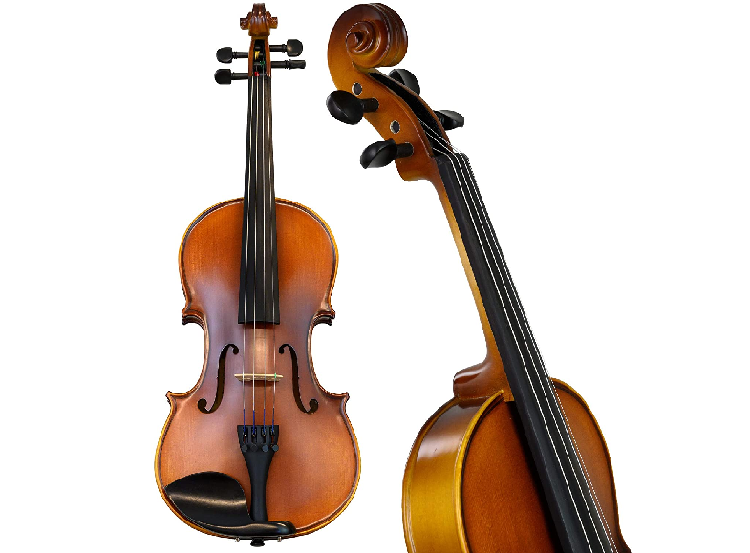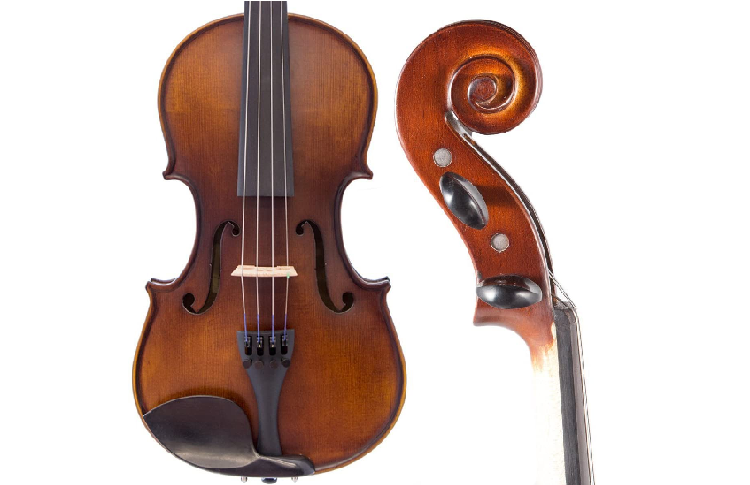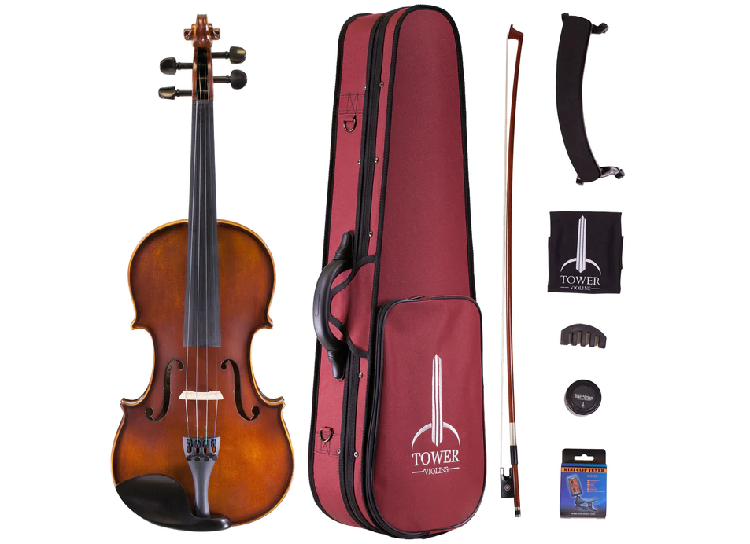- Best Fretted Violins Guide - May 31, 2022
- Best Yamaha Violins Brand Guide - April 13, 2022
- An Honest Mendini MV300 Review - March 31, 2022
Mendini is well known for producing cheap student-quality instruments that may or may not be playable for even a seasoned professional. However, where they fail in quality control and material quality, they make up for a bundle of goodies at a super cheap price.
My experience with Mendini and their parent company Cecilio has varied over the years. Sometimes they do well, and you know you have received at least a playable instrument.
Other times they fail to produce something that resembles a playable violin when it arrives at your front door. The one thing I’ve noticed in my experience is the more expensive the violin from either of these companies, the more likely you are to receive a higher quality instrument. So, where does the MV300 land? Well, let’s find out?
Pros, Cons, and Bottomline
The MV300 falls into the middle of the Mendini range; however, it’s firmly an entry-level student instrument. You could certainly do worse from either line, but I wouldn’t consider the MV300 one of my top choices either.
It’s a pretty basic student violin that will last roughly a year or two before a replacement will be needed. However, it will create other challenges in terms of playability and producing a clear, consistent tone.
You will also find that these instruments usually need some TLC from a luthier before they are comfortably playable, which adds to the overall cost. Overall there are many other options out there that provide a better overall package for your money and won’t nickel and dime you in replacement accessories and repairs.
I recommend checking out Fiddlershop and Kennedy Violins first. However, there is one Cecilio alternative I don’t mind; find out which one below!
Pros
- Inexpensive starter instrument
- Could be an acceptable backup violin
Cons
- Suffers from poor quality control
- Cheap accessories that will need replacing quickly
- Will need some TLC or at least a lookover from a luthier, which adds to the cost
- Needs new strings right away
Quality Student Violin vs Mendini MV300
When searching for a student instrument, there are many ways to go about it, and the most common is to find a local music store and rent. However, with the uptick in adult learners and people who would rather own their instruments, the market for student instruments has been flooded.
When I first started playing the violin, Cecilio and Menindi were the leaders. Perhaps that is still the truth on Amazon. But in the music world, they have been dethroned by a few different companies offering higher-quality student instruments for only a slightly higher price point. So what do Kennedy Violins, Fiddlershop, and Johnson Strings do differently? Let’s dive in!
Build Quality
Step one in creating a violin is selecting and carving out tonewoods. Tonewoods are the most critical material in a violin because they are the most responsible for the overall tone of the violin.
Violins, including the MV300, are made from solid carved spruce and maple. The MV300 comes in multiple finishes, including pink, white, purple, and black, along with the traditional satin and varnish.
The fun colors are great for enticing young children. Still, in general, it’s a negative mark on the quality of the instrument. The finish of the violin can affect the tone. HIgher end violins have a hand-rubbed varnish that is picked carefully for the violin and applied to be even and help aid the violin’s natural tone.
A Colored finish indicates a lower quality instrument that was machine sprayed; it may even hinder the overall tone depending on how thick it is sprayed.
Most student violins use Chinese sourced tonewoods that have been aged or dried for at least a few years. Mendini doesn’t age or dry their woods, leading to a less complex sound.
However, they aren’t the only company that skips this step either. Mostly this will leave the violin sounding empty and devoid of personality, but this is very typical of student violins.
The biggest concern lies in how they carve the tonewoods. Cheaper violins are susceptible to having thinner tonewoods which sound great at first but slowly degrade over time. While I never expect a student violin to age much beyond what it produces at first, I don’t expect the sound to degrade either.
In my own experience, I noticed a small degrade in the overall tone, especially among the upper register. The violin never had a pleasant upper register. Still, it came very squeaky and, at times, incredibly painful to listen to by the time I upgraded to my new violin.
I also noticed a general breakdown in other violin components like the pegs and tailpiece. The MV300 comes with the standard ebony fingerboard and fittings, which provide quality, durability, and a standard look. However, the pegs we’re less than stellar, in my opinion.
The glue and other materials used to keep the violin together are also important. However, I noticed no separation in my violin, and it’s still intact despite being treated with less than stellar care. She’s spent a few nights in my car in the cold and the heat without incident; however, I wouldn’t push it by leaving this instrument in storage for an extended period of time.
Setup and Strings
Outside of the tonewoods and craftsmanship that goes into the violin, the setup has the most effect on the violin’s sound. The setup includes several steps that take the violin from a hunk of carved wood to an actual instrument.
This includes setting the soundpost in an exact spot, carving the bridge, fitting the pegs, attaching the endpin, tailpiece, and stringing the violin. It’s a big job, and it’s vital it’s done correctly.
Mendini fails the most in two aspects. First, they don’t set the bridge during shipping. This is meant to protect the violin from damage, and it does. Still, it also means that someone who has never touched a violin is now responsible for setting the bridge or finding a luthier to do it for them.
They also tend to mass carve the bridge instead of individually fitting it to the instrument, meaning the feet may not sit flat, and the strings may not be the right distance apart from each other.
A luthier can fix this, but it will add to the overall cost, which could have been put towards a better violin that comes ready to play out of the case. The pegs and the tailpiece are my last complaint. As I mentioned earlier, the pegs are ebony.
While that is standard hardwood and durable, my pegs started to split and crack quite quickly. They were also fit poorly in the pegbox, which meant they were hard to tune and slipped out of tune regularly.
The tailpiece is made from carbon composite with 4 built-in fine tuners, which is standard, but the quality of these fine tuners leaves a lot to be desired.
One of mine broke quickly, which left me tuning with the pegs. While I’m sure the fine tuner could be replaced, it would be better to get a higher quality tailpiece installed instead, but that adds repair cost to an already lower quality instrument.
The last bit of the setup includes the strings. D’Addario Preludes are the strings I see on most entry-level student instruments, except for the Mendini line.
Mendini instruments come with their inhouse strings, which are terrible. Getting some Preludes put on is a must and will significantly help with the first few steps of playing. I recommend ordering a set at the same time as your instrument.
Tone Quality and Longevity
While listening to this violin intently and in my own experience, I can confidently say this violin sounds like the equivalent of cardboard. It’s functional but rather unexciting tone-wise. It can also be used as an art canvas, speaking from experience.
The first position on the violin is pleasant enough for a beginner. The G string is lovely and a little on the warm side but relatively empty otherwise, the D and A strings sound nice but also empty. The E string is a little on the squeaky side. The higher the position you move into, the more squeaky and muddy the overall tone of the violin gets.
Overall I expect this violin to last about a year, maybe two, before the student will start to feel highly hindered in their progress.
When I moved from the CVN300, the Cecilio counterpart, to this violin, I noticed a swift improvement in my overall tone and ability to conquer more challenging skills faster. Even simple things like slurs were easier to produce.
But for learning twinkle twinkle and other essential songs, it will do just fine. By the time you advance halfway through Suzuki or are nearing the end of Essential Elements 2, you will want to upgrade to a new violin.
Case and Accessories
I’ve never seen a student violin that didn’t come with a case, bow, and some rosin. But most come with a nice bundle of goodies or the option to add that on. Mendini is no different; they include a case, shoulder rest, rosin, tuner, lesson book, and bow.
The case is a basic triangle case, nothing fancy, but it gets the job done. There isn’t a lot of storage, and this is my biggest complaint. An upgrade will be in order when you upgrade your violin. Still, in my experience, intermediate violins tend to come with a nice case.
The bow is the worst part of the bundle and needs a replacement. These bows use poor quality horsehair that sheds and breaks quickly, and the sticks tend to be warped or unbalanced and hard to use.
I recommend getting a carbon fiber or fiberglass bow from Fiddlershop or Glasser. Fiddlerhsop also offers a budget line of Sandalwood bows for those wanting a more traditional wood bow experience.
The shoulder rest is exceptionally comfortable. I refused to use mine and learned without one for a good year. But I highly recommend using one; it’s far more comfortable.
I recently purchased an Everest, and I’m thrilled with it; I also use a Fiddlershop carbon fiber rest which I love. The biggest problem with the Cecilio shoulder rest they include is the fact that it’s not nearly long enough to adequately support the violin.
The rest of the accessories do the job for a beginner. However, I recommend getting a tuner that also has metronome functionality. Your teacher will assign the method books and music you will use.
Alternative Recommendations
The MV300 does the job, but you can find significantly higher-quality violins for only a bit more money. My favorite places are Kennedy Violins and Fiddlershop, but I do have one Cecilio violin that I don’t mind.
However, keep in mind that the same things apply; this violin will need setup, accessories replaced, and other adjustments. But overall, it’s higher quality than the MV300.
Cecilio Alternative- CVN500
The CVN 500 is a higher-end Cecilio violin. It comes in at under 200 dollars, making it a good deal, and unlike the Mendini line, it comes strung with Prelude strings already. I like the most about this violin’s detachable fine tuners and overall tone.
It’s a little brighter, but some personality can be found once the violin has some time to settle in. The detachable fine tuners mean they can be easily replaced should one break.
The Cecilio outfits come with slightly higher-quality accessories. Still, the bows, case, shoulder rest, and lesson book are the same. They are also subject to the same issues and replacements as the MV300. But, the tuner is of higher quality and will serve a student well into the career.
You’ll still need to have this violin setup or at least checked out to make sure everything is in place. But you stand a slightly higher chance of getting something of better quality.
Bunnel Premier
Kennedy Violins is the Fiddlershop of the west coast, offering high-quality student violins that are accessible on Amazon. They offer a few of their student more intermediate violins on Amazon, with their higher-end violins offered exclusively on their site.
The Bunnel Premier is made from spruce and maple with ebony fittings and a hand-rubbed satin oil finish. The tailpiece is carbon with built-in fine tuners, I trust their hardware far more than Cecilio’s, so this isn’t a negative for me.
The outfit includes a large spacious case with plenty of storage, a high-quality brazilwood bow, a shoulder rest similar to my Fiddlershop one, a book, and rosin.
The best part is the violin is ready to play out of the case and fully set up in the US. It comes strung with D’Addario Prelude strings, and you can be assured the bridge is perfectly fit to the violin, and the pegs will hold their tune well.
It’s a great deal for a new student who can’t access a music store or simply wants to purchase something online because it’s easier or more accessible.
Bunnel Pupil
The Bunnel Pupil is similar to the Premier. Still, it has an oil-rubbed varnish instead of a satin varnish, giving it a darker look. It’s a gorgeous violin and comes with the same accessories as the Premier.
Including an extra set of perlon strings, which are synthetic and may give the violin a slightly warmer tone compared to the steel Prelude strings. I’ve never tried them, but I’m curious how they sound and hold up against other student strings like Fiddlershop or Dominants.
Between the two, I prefer the Pupil for its overall appearance. Still, I’m a fan of significantly darker colored and warmer sounding violins. I can’t tell the difference between the two tonally; both are clear, even, and sound lovely. So go with the one that draws you the most; after all, the violin chooses the musician.
Tower Strings Entertainer
The Tower Strings Entertainer is one of the 3 violins offered in Fiddlershops budget student line. I’m a huge fan of Tower Strings instruments and find them well made and come with a lot for the money.
The Entertainer is no different. It’s made from spruce and maple tonewoods that have been dried for 2 years, ebony fittings and fingerboard, and a tailpiece that is similar or the same as the one on the Bunnel violins.
Like Kennedy Violins, Fiddlershop set all of their instruments up by hand in the US. This violin comes with Prelude strings and is ready to play out of the case.
The outfit includes a basic triangle case, a brazilwood bow that I still use occasionally, rosin, shoulder rest, practice mute, polishing cloth, and digital tuner. The accessories are all high quality and will last quite a while.
FAQs
Answer: Renting an instrument means you pay a monthly fee to use a violin to learn on. An excellent rental contract will allow you to set aside a portion of that toward purchasing the violin you are renting or another one usually higher quality in value.
Renting is a great way to quickly get a violin without putting out a ton of money upfront. Still, you will end up paying significantly more in the long run. You can rent violins online at Johnson Strings, Music & Arts, Stringworks, and other retailers.
Answer: I’m not sure what you would consider the standard. I imagine that varies from region to region in the US and significantly across the globe. I do see Eastman VL80 and VL100. Eastman is a company that specializes in orchestral strings and guitars. They are well known and have an excellent reputation for quality. I currently play an Eastman VL305, and I couldn’t be happier.
Answer: If you are over 12 or an adult, you most likely will need a full-size violin, but if you are particularly small, you will want a 7/8th violin. Children and small teens will need to be measured to get the correct fit. The measurements are below:
• 1/8 Violin- 16in
• 1/4 Violin- 18.5in
• 1/2 Violin- 20in
• 3/4 Violin- 22in
• 4/4 Violin- 23in
Final Thoughts
Overall the MV300 is an okay student violin and will do well for the first stage or so of learning. But I wouldn’t recommend it as a long-term violin or something to rely on to get you to orchestra level. It also comes with many quality control issues, along with needing to get it set up professionally by a luthier.
This adds to the overall cost, and that money could be spent on a higher quality violin right away. A better violin will allow you to go farther and learn easier, but it will also mean less money spent over time.
Looking for more interesting readings? Check out:

